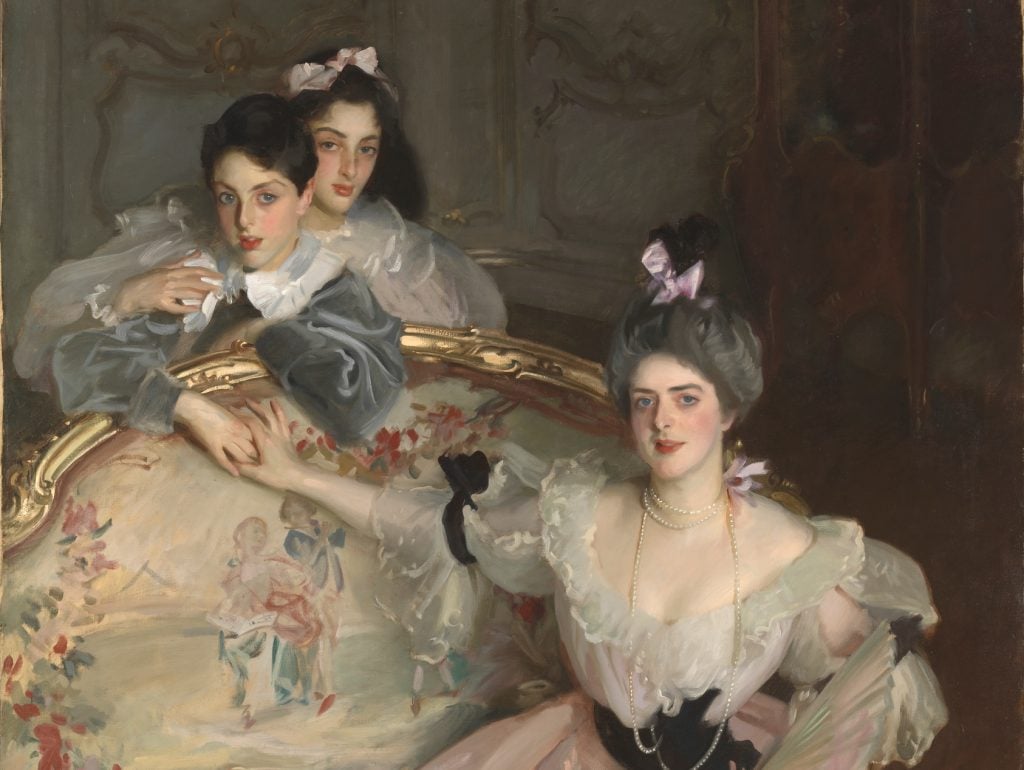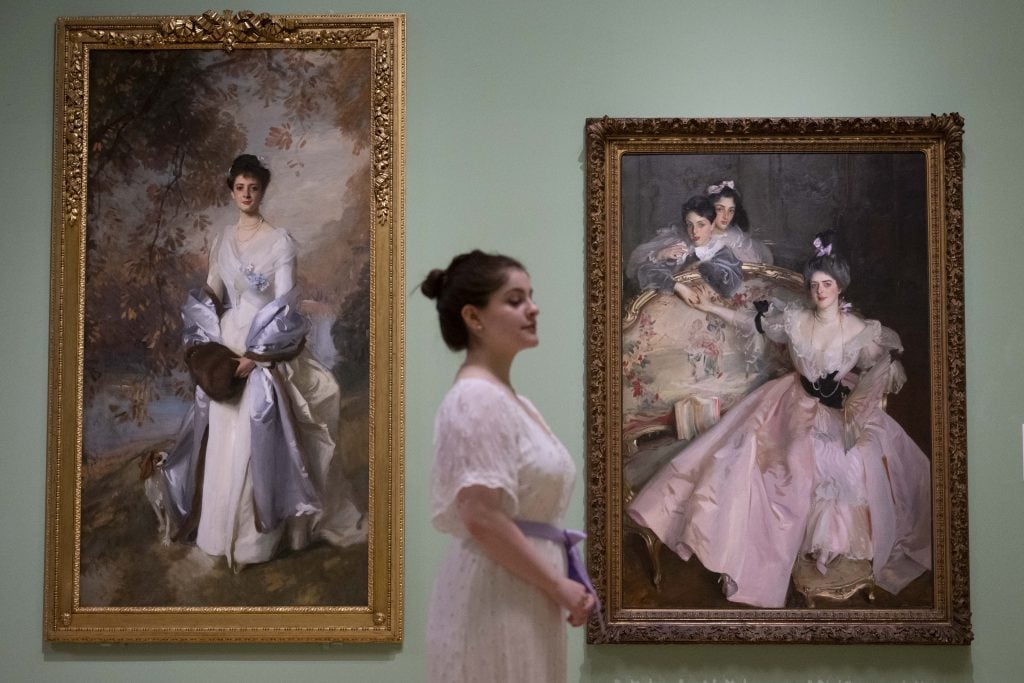Art World
How John Singer Sargent Turned His Sitters Into Stars
The 1896 portrait of Adèle Meyer and her two children was an immediate sensation when it debuted at the Royal Academy.

The 1896 portrait of Adèle Meyer and her two children was an immediate sensation when it debuted at the Royal Academy.

Jo Lawson-Tancred

Crowds have descended on Tate Britain over the past few months to see the landmark exhibition “Sargent and Fashion,” which brings together prize loans rarely seen in the U.K. and foregrounds the painter’s keen eye for a timeless sartorial moment. But what was it actually like to be captured by Sargent, society’s pre-eminent portraitist of the late 19th century?
One of the standout works on view, Mrs Carl Meyer and her Children (1896), was an immediate sensation when it debuted at the Royal Academy in May 1897. The main sitter, Adèle, is anchored into the composition by the sheer mass of her iridescent, champagne pink dress, accessorized with a fan, a lavish string of pearls reaching down to her tiny heeled feet, and a ribbon atop her bouffant hair. Her hand reaches back towards her two children Frank and Elsie, who stand, peering at the viewer, from behind the gilt, Louis XVI-style sofa. The Meyers were a cosmopolitan family of German Jewish origin that lived in Mayfair, London.
Unsurprisingly, the critics gushed. American journalist Henry Adams recounted how Adèle “did us the favor to stand under her portrait… to show that she was as good as her picture,” concluding “nothing better ever was done, or can be done.” Another paper, Baily’s Magazine of Sports and Pastimes, observed, “the longer you gaze the more fascinated you become.” It went on to be exhibited in Boston in 1899 and at the Paris International Exhibition in 1900.

A viewer at the “Sargent and Fashion” exhibition held at the Tate Britain gallery in London. Photo: Rasid Necati Aslim/Anadolu via Getty Images.
After meeting in the summer of 1896, Adèle and Sargent became good friends and remained in touch for decades. At times, it appears their strong personalities could produce an energizing friction. Sargent once fondly recalled the occasions on which Adèle sat for him in a private letter to her, writing of “the danger of explosions… when an enforced companionship brought out all that is devilish in our nature.”
Perhaps this palpable vigor is what The Spectator was referring to when it described Adèle in Sargent’s painting as “a speaking face, a living figure.”
The social boost of being portrayed by Sargent could last for years, as proven by a 1901 article in Vogue that described Adèle as a “beauty whom Sargent has immortalized, and incidentally made the fashion with the Prince of Wales set.” In 1904, Adèle received a letter from Marcel Proust, to whom she was related, asking if she could introduce his friend Prince Antoine Bibesco to Sargent.
By many accounts, an association with Sargent helped propel Adèle to the status of a minor celebrity. The publication Woman at Home claimed in 1899, “when Mrs. Meyer is ushered into her box at the opera, comes always a little flutter among the audience.” Another paper, describing a gala benefit held for actress Nellie Farren in 1898 that was attended by many of the most famous actors of the day, noted how “Mrs. Carl Meyer’s pretty head was distinguishable amid a mass of other folk.”
All eyes may have been on her at the opera, but Adèle was also a dedicated suffragist and philanthropist. Among her many endeavors was her work as benefactor and chair of St. Pancras School for Mothers, which from 1907 provided help for mothers in order to reduce infant mortality rates. She also co-authored Makers of our Clothes (1909), a rigorously researched exposé of poor working conditions in the unregulated dressmaking industry.
Always passionate about the performing arts, Adèle and her husband Carl were keen supporters of the theater, helping to found Her Majesty’s Theatre in 1897 and supporting the campaign to establish a National Theatre in 1909. After Carl’s death in 1922, Adèle served on the committee of the Shakespeare Memorial National Theatre.
“Sargent and Fashion” is on view at Tate Britain in London until July 7, 2024.